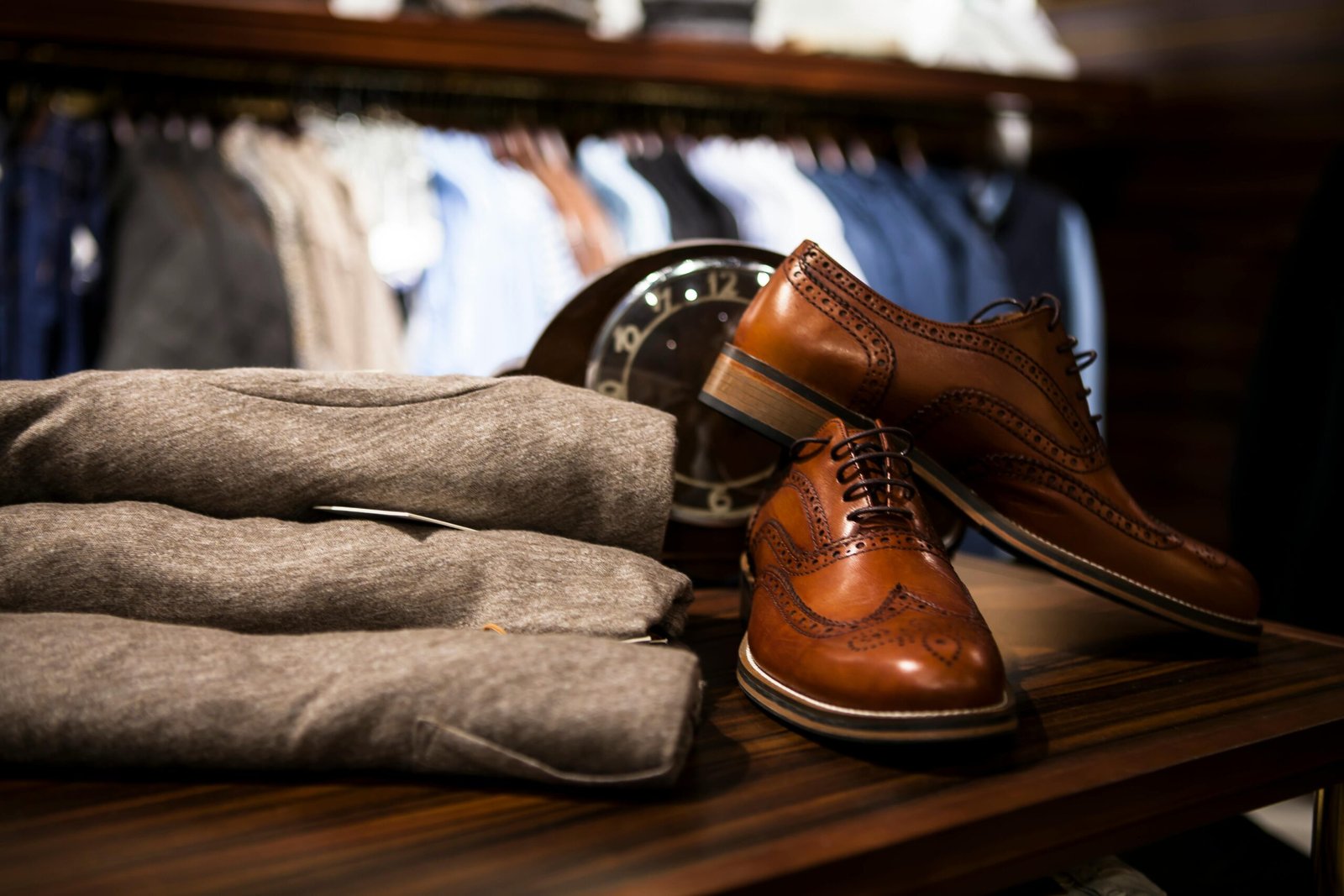Are Shoes Clothing
Explore the intriguing question ‘Are Shoes Clothing?’ in our comprehensive article that delves into the history, functionality, and fashion significance of shoes, and discover how these essential items are categorized in the world of apparel.”
Introduction
Clothing serves various purposes; it is what we use to cover our bodies, protecting us from different environmental conditions, and it also allows us to express our personal style and identity. Within the broad category of clothing, shoes play a crucial role, leading us to ask, “Are Shoes Clothing?”
This article delves into the interesting debate of whether shoes should be considered as clothing. Historically, they were created out of necessity, to protect the feet from rough terrains and harsh weather conditions. This evolution highlights the significance of shoes in our cultural and social lives, prompting the question, “Are Shoes Clothing?”
The purpose of shoes extends beyond mere protection. They are designed to provide comfort during various activities, support the feet’s structure, and prevent injuries. But shoes also have a profound impact on how individuals express their style and personality. This leads us to consider again, “Are Shoes Clothing?” as we explore their role not only in practicality but also in fashion and identity expression.
Historical Perspective
Throughout history, shoes have transformed from basic necessities to significant fashion items. For example, in ancient Egypt, sandals were made from papyrus and palm leaves, symbolizing simplicity yet importance in their daily life. In contrast, Roman footwear was often elaborate, indicating the wearer’s rank within society. This rich history of shoes across various civilizations illustrates their vital role, not just in function but as a medium of cultural and social expression.
Functionality of Shoes
Shoes are primarily designed to protect our feet from harm and provide comfort in different settings. This fundamental function has led to the development of specialized footwear to meet the demands of various activities and professions. For instance, athletes wear sports shoes designed to enhance performance and reduce injury risks, while construction workers use boots that ensure safety and durability on rugged sites. This diversity in shoe design underscores the importance of functionality, showing how footwear is tailored to meet specific needs, ensuring both protection and comfort in everyday life and professional environments.
Shoes as Fashion Statements
In the realm of fashion, shoes have ascended to become prominent elements that express personal style and are influenced by cultural trends. Designer shoes, in particular, are often seen as objects of desire, reflecting the latest fashion trends and the artistic vision of the creators. They are not merely accessories but integral parts of fashion, setting the tone for individual style and often becoming iconic symbols within popular culture. The evolution of shoe design reflects the changing aesthetics and values of society, with shoes now serving as a powerful means of personal and cultural expression. The impact of shoes in fashion extends beyond their practical use, as they continuously shape and are shaped by the ever-changing landscape of style and societal trends.
Materials Used in Shoe Making
The materials used in making shoes have greatly evolved over time. In the past, leather was the primary material for shoe construction due to its durability and comfort. However, with growing environmental awareness and technological advancements, the shoe industry has shifted towards using more sustainable and varied materials. Nowadays, shoes are made from a range of materials, including synthetic fibers, recycled plastics, and plant-based alternatives like bamboo, cork, and organic cotton. This change reflects the industry’s effort to reduce environmental impact and cater to consumers who value sustainability. The adoption of modern materials in shoe manufacturing not only helps in conserving natural resources but also opens up new possibilities for design and functionality, making footwear more eco-friendly and aligned with global sustainability goals.
Cultural Significance of Shoes
Shoes are more than just functional objects; they carry significant cultural and symbolic meanings in various societies. Across the world, footwear plays a role in rituals, traditions, and social customs, reflecting the cultural identity and values of different communities. For instance, in some cultures, the type of shoes one wears can signify their social status or role within the community. In ceremonial events, specific shoes are often required, highlighting their importance in cultural practices. Furthermore, shoes can symbolize a rite of passage, with certain types worn at different life stages or ceremonies. The cultural depth and significance of shoes illustrate their integral role in human society, serving as more than just foot coverings but as carriers of meaning and tradition.
Shoes in the Fashion Industry
The fashion industry’s relationship with shoes is both extensive and influential. Shoes are not only a commodity but also a form of art and expression. Iconic designers and major brands play a pivotal role in setting footwear trends and introducing innovative designs that capture the imagination of consumers worldwide. The business of shoes encompasses a vast market, from high-end designer footwear to everyday functional styles, making it a significant sector in the fashion economy. These fashion influencers drive the evolution of shoe styles, blending aesthetics with practicality, and often setting the pace for what becomes popular in mainstream culture. The economic and creative significance of shoes within the fashion industry highlights their role not just as accessories but as essential elements of style and fashion innovation, shaping how individuals express themselves through their choice of footwear.
Technological Advancements in Footwear
The shoe industry has witnessed remarkable technological advancements, significantly enhancing the functionality and comfort of footwear. Innovations like smart shoes, which are equipped with sensors and connectivity features, represent a major leap forward. These high-tech shoes can track health metrics, adjust to the foot’s shape for better comfort, and even interact with other smart devices to provide a comprehensive wellness profile. The integration of technology into shoe design not only improves the wearer’s experience but also opens up new possibilities for personalized and adaptive footwear solutions. This ongoing evolution in shoe design and production reflects a trend towards greater sophistication, where technology meets traditional shoe crafting, leading to improved performance and user experience in footwear.
Psychological Aspects of Shoes
Shoes hold a unique place in our lives, often reflecting our personal identity and facilitating emotional connections. They are more than just practical items for foot protection; shoes can embody memories, signify personal achievements, or represent individual style. For many people, choosing and wearing certain types of shoes can be a form of self-expression, communicating aspects of their personality and life story. The deep psychological impact of footwear is evident in how passionately individuals can feel about their shoes, whether it’s the joy of acquiring a new pair, the comfort of wearing a favorite set, or the nostalgia of keeping old shoes that carry sentimental value. This emotional and psychological dimension highlights the complex relationship between individuals and their footwear, illustrating that shoes can indeed be a significant part of our self-expression and personal history.
Legal and Ethical Considerations
In the shoe industry, legal and ethical considerations play a crucial role. Issues such as copyright and design patents are important for protecting the creative and intellectual property of shoe designers and manufacturers. These legal mechanisms ensure that innovation and originality are rewarded while preventing unauthorized copying and production. On the ethical front, concerns about sustainable production, fair labor practices, and the use of environmentally friendly materials are increasingly coming to the forefront. Consumers are more aware and concerned about the origins of their footwear, leading to a demand for ethically produced shoes that consider worker rights, environmental impact, and animal welfare. This shift towards ethical production underscores the complex legal and ethical landscape of the footwear manufacturing industry, highlighting the need for transparency, accountability, and fair practices in the creation and distribution of shoes.
Shoes in Art and Media
Shoes are iconic in art and media, symbolizing various themes and eras. Iconic shoe moments in history showcase their influence beyond practical use, highlighting their role in storytelling and artistic expression.
Economic Impact of the Shoe Industry
The shoe industry affects global markets, employment, and manufacturing. Its size and trends reflect the economic power and impact of footwear, showing its importance beyond just fashion and utility.
Health and Shoes
Ergonomic design and the right shoe choice are crucial for foot health. Are Shoes Clothing This aspect of footwear emphasizes the importance of combining comfort, design, and health considerations in shoe production.
Future of Footwear
The industry faces trends like sustainability and technological integration, predicting future shifts in shoe design and production. These changes address environmental concerns and consumer demands, pointing towards a progressive future for footwear.
Conclusion
“Are Shoes Clothing? Indeed, as a blend of necessity, style, and expression, shoes confirm that they are a form of clothing. Are Shoes Clothing? This question is answered through their historical, cultural, and practical significance, proving they are more than just foot coverings. Are Shoes Clothing? Yes, as integral parts of our attire and identity, they definitively meet the criteria of clothing.”
FAQ-Are Shoes Clothing
Are shoes a type of clothing?
Yes, shoes are a type of clothing because they cover and protect your feet, just like clothes cover other parts of your body.
Have people always thought of shoes as clothing?
Over time, people’s ideas about shoes and clothes have changed. In the past, both were mostly for protection. Now, they also show style and personal taste.
Why do we sometimes think of shoes differently from clothes?
We often see shoes as different because they have a special job: protecting our feet. Also, the way we make and sell shoes can be different from other clothes.
Does it matter what shoes are made from to call them clothing?
No, it doesn’t matter what material shoes are made from. Whether they are leather, cloth, or plastic, they are still considered clothing.
How do different cultures view shoes as part of clothing?
In some cultures, shoes are very important and are seen as a big part of traditional outfits, showing they are considered clothing.
How do shoes work with the rest of our clothes in fashion?
In fashion, shoes are important to complete a look. They can match or stand out from the rest of the clothes to make a style statement.
Are there rules about calling shoes clothing?
In business and law, shoes are often grouped with clothing because they are all things we wear. This shows that shoes are part of what we call clothing or apparel.
Read Article: Skies Are Blue Clothing














